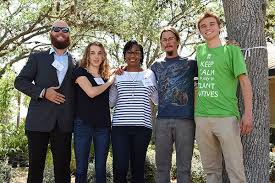When living in Florida, one of the best ways to help the environment while also protecting your property from storm damage is to plant native trees. Florida’s native trees are naturally adapted to the climate and can often withstand hurricane-force winds better than exotic or shallow-rooted species. Choosing the right trees not only supports local wildlife but also reduces the risk of downed trees and property damage in a hurricane. And one of the most important observations we made is that groups of trees faired much better than stand alone trees, strength in numbers.
Please keep in mind these are our observations and are not statistics. Results in your landscape may vary based on many different factors.
Here are some native Florida trees that we observed to be resilient in the latest stretch of storms.
1. Sand Live Oak (Quercus geminata)
- Characteristics: Known for its strength and longevity, the Sand Live Oak is one of the most hurricane-resistant trees. With a deep, wide-spreading root system and sturdy limbs, it holds up well under high winds.
- Why It Works: This oak species has a naturally strong structure with broad, arching branches that can resist storm-force winds better than many other trees. Its dense canopy provides shade and serves as a habitat for many species.
Install this species in groups of 3-5 at 10’ spacing to mimic nature and develop a strong grouping of trees. - Tips: Plant Sand Live Oaks in well-drained soil to support their roots and avoid planting closer than 15’ to the home.
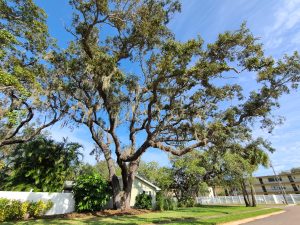
2. Southern Magnolia (Magnolia grandiflora)
- Characteristics: The Southern Magnolia is an iconic Florida tree with large, glossy leaves and striking white flowers. Though it may appear delicate, it has a deep root system and a well-balanced canopy that can withstand severe storms.
- Why It Works: Southern Magnolias are slow-growing and develop a strong, compact structure that resists breaking under pressure.
- Tips: Make sure to space these trees adequately, as their dense root systems need room to expand and stabilize.
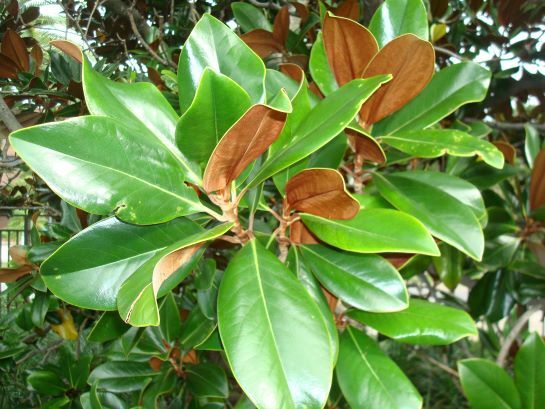
3. Sabal Palm (Sabal palmetto)
- Characteristics: As the official state tree of Florida, the Sabal Palm is an adaptable and highly resilient choice. These almost seemed to thrive after the storms passing with most damage observed as a result of larger trees or structures falling on them. Its flexible trunk and leaves bend with strong winds, reducing the risk of snapping.
- Why It Works: This palm’s roots anchor it deeply, and its bendable fronds allow it to withstand gusty conditions.
- Sabal Palms were also one of the few trees that saw little to no negative effects from storm surge.
- Tips: Plant Sabal Palms in sunny or shady areas with good drainage for optimal growth.
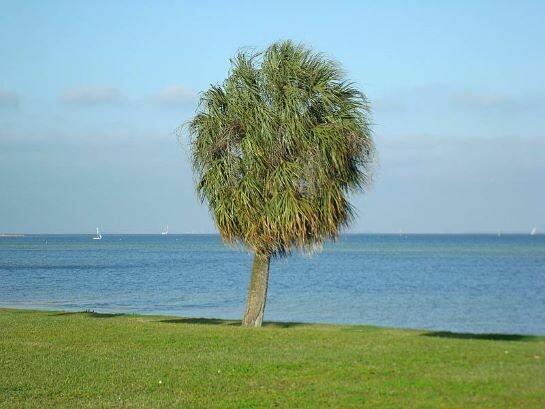
4. Green Buttonwood (Conocarpus erectus)
- Characteristics: This small to medium sized tree is sometimes referred to as the fourth mangrove. It thrives in coastal areas that may see periodic salt water inundation and also periods of drought. Their dense, evergreen canopies invite in tons of wildlife and can create a beautiful year round presence to anchor formal and naturalistic landscapes.
- Why It Works: This tree is fast growing, establishing in a matter of a few months rather than a year or more. This makes it suitable to withstand storm surge and wind quickly.
- Tips: These can be used as a hedge, tree groupings, or stand alone specimens. Their flexibility in the landscape makes them highly valuable for many different creative uses.
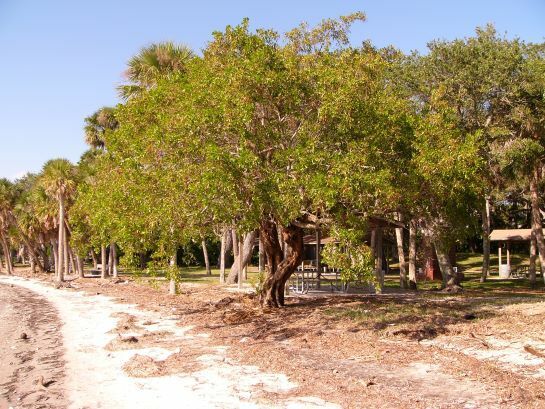
5. Gumbo Limbo (Bursera simaruba)
- Characteristics: Known as the “tourist tree” due to its red, peeling bark, the Gumbo Limbo is a sturdy, salt-tolerant native species. Its soft wood allows it to bend with the wind rather than break, and it recovers quickly if damaged.
- Why It Works: This tree’s adaptable nature and flexible limbs make it a standout survivor during hurricanes.
- Tips: Plant Gumbo Limbo in coastal areas or as a natural windbreak, and make sure the soil drains well.
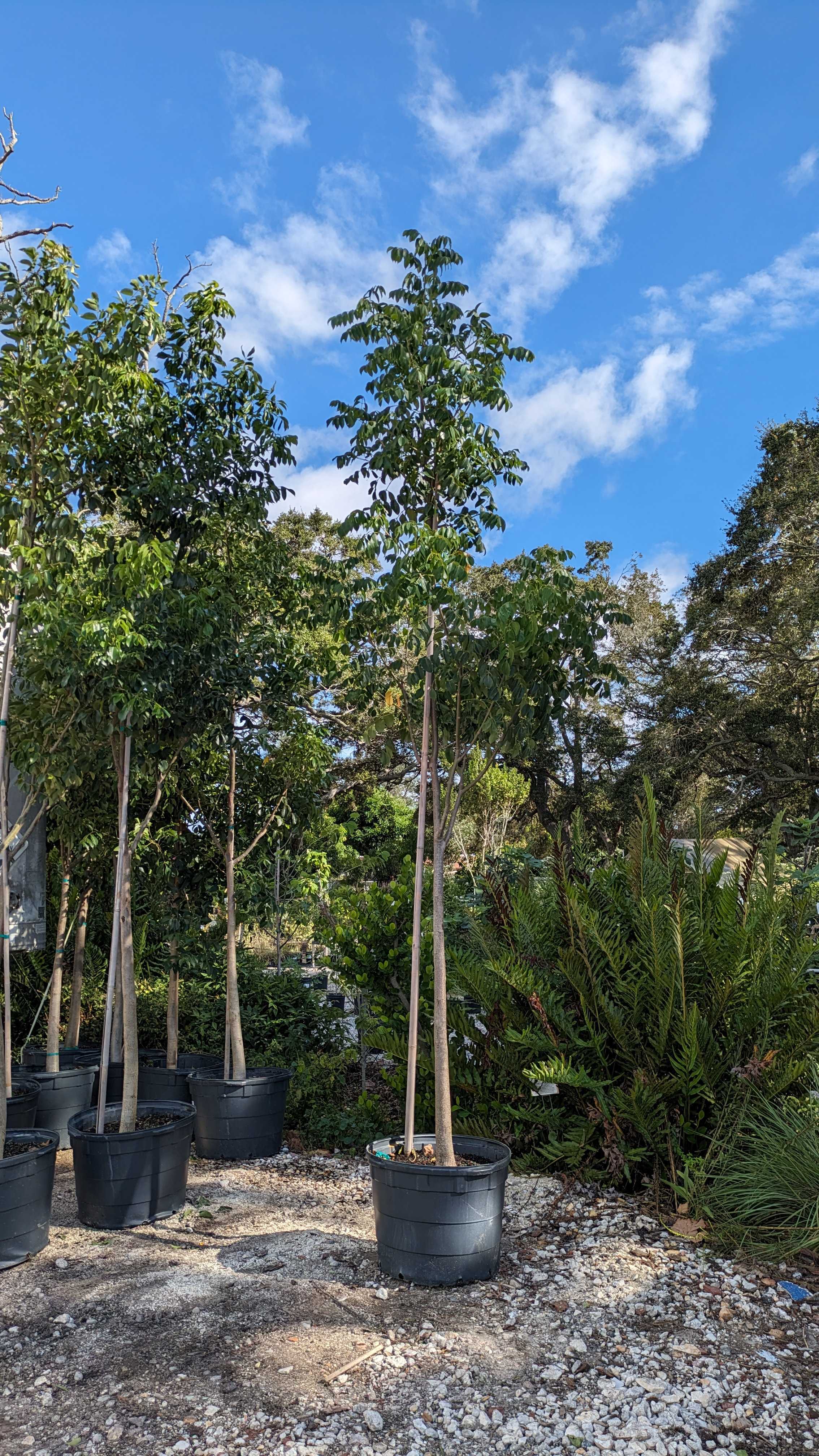
Best Practices for Planting Hurricane-Resilient Trees
- Start Young and Small: Young trees adapt to Florida’s conditions better and develop stronger root systems over time.
- Space Properly: Crowded trees have less room to expand their roots and are more prone to uprooting.
- Regular Pruning: Trim dead or weak branches to prevent them from becoming projectiles during high winds.
- Healthy Soil: Keep soil well-drained and nutrient-rich to promote healthy root growth, which enhances stability.
Conclusion
Choosing native, hurricane-resistant trees helps protect your home and property while supporting Florida’s natural landscape. Trees like the Sand Live Oak, Southern Magnolia, Sabal Palm, Green Buttonwood, and Gumbo Limbo have evolved to survive in Florida’s challenging weather, including hurricane winds. By selecting the right trees and following best planting practices, you can create a beautiful, resilient landscape that stands strong through storm season.

